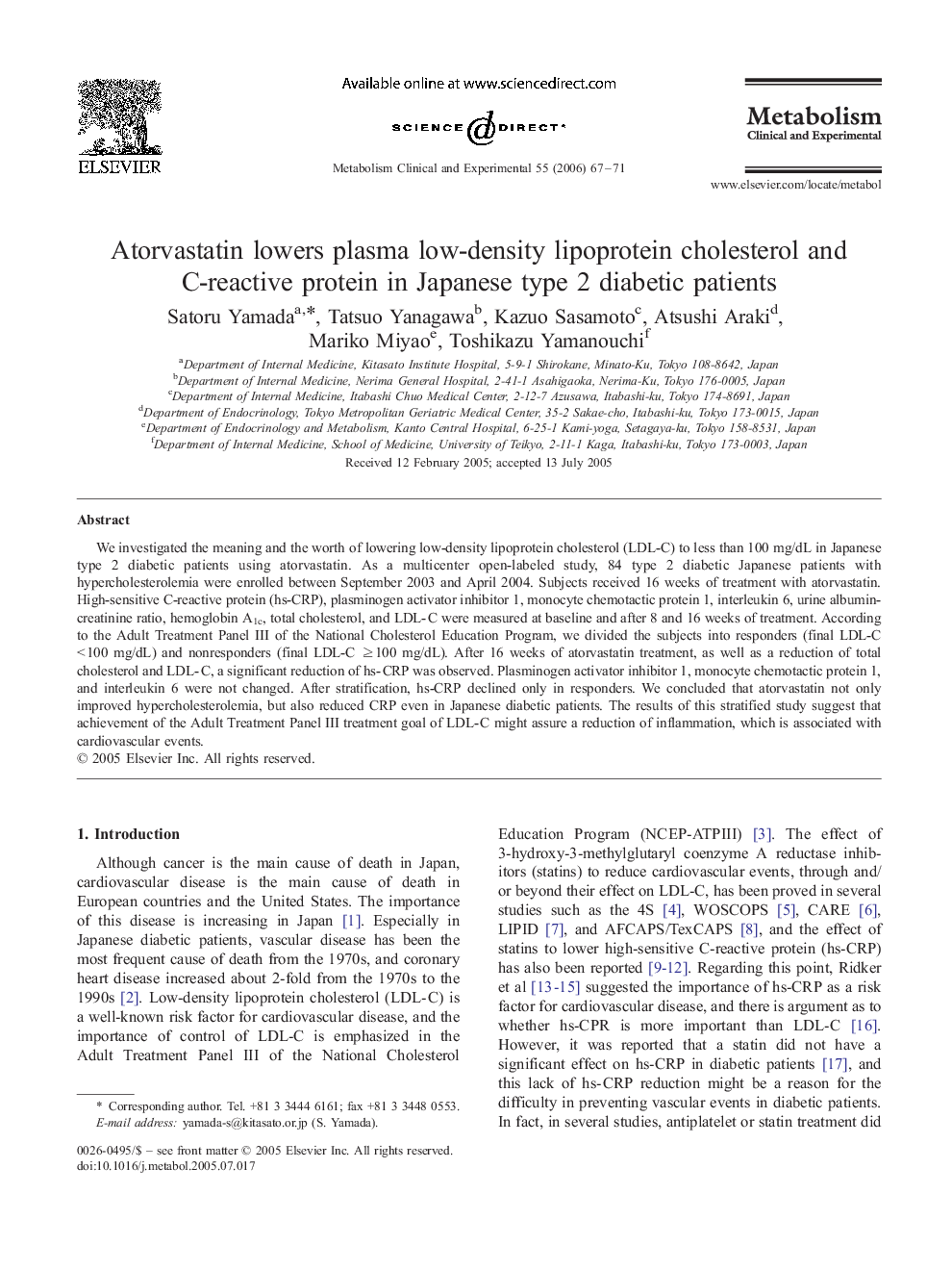| Article ID | Journal | Published Year | Pages | File Type |
|---|---|---|---|---|
| 2806976 | Metabolism | 2006 | 5 Pages |
Abstract
We investigated the meaning and the worth of lowering low-density lipoprotein cholesterol (LDL-C) to less than 100 mg/dL in Japanese type 2 diabetic patients using atorvastatin. As a multicenter open-labeled study, 84 type 2 diabetic Japanese patients with hypercholesterolemia were enrolled between September 2003 and April 2004. Subjects received 16 weeks of treatment with atorvastatin. High-sensitive C-reactive protein (hs-CRP), plasminogen activator inhibitor 1, monocyte chemotactic protein 1, interleukin 6, urine albumin-creatinine ratio, hemoglobin A1c, total cholesterol, and LDL-C were measured at baseline and after 8 and 16 weeks of treatment. According to the Adult Treatment Panel III of the National Cholesterol Education Program, we divided the subjects into responders (final LDL-C <100 mg/dL) and nonresponders (final LDL-C â¥100 mg/dL). After 16 weeks of atorvastatin treatment, as well as a reduction of total cholesterol and LDL-C, a significant reduction of hs-CRP was observed. Plasminogen activator inhibitor 1, monocyte chemotactic protein 1, and interleukin 6 were not changed. After stratification, hs-CRP declined only in responders. We concluded that atorvastatin not only improved hypercholesterolemia, but also reduced CRP even in Japanese diabetic patients. The results of this stratified study suggest that achievement of the Adult Treatment Panel III treatment goal of LDL-C might assure a reduction of inflammation, which is associated with cardiovascular events.
Related Topics
Life Sciences
Biochemistry, Genetics and Molecular Biology
Endocrinology
Authors
Satoru Yamada, Tatsuo Yanagawa, Kazuo Sasamoto, Atsushi Araki, Mariko Miyao, Toshikazu Yamanouchi,
